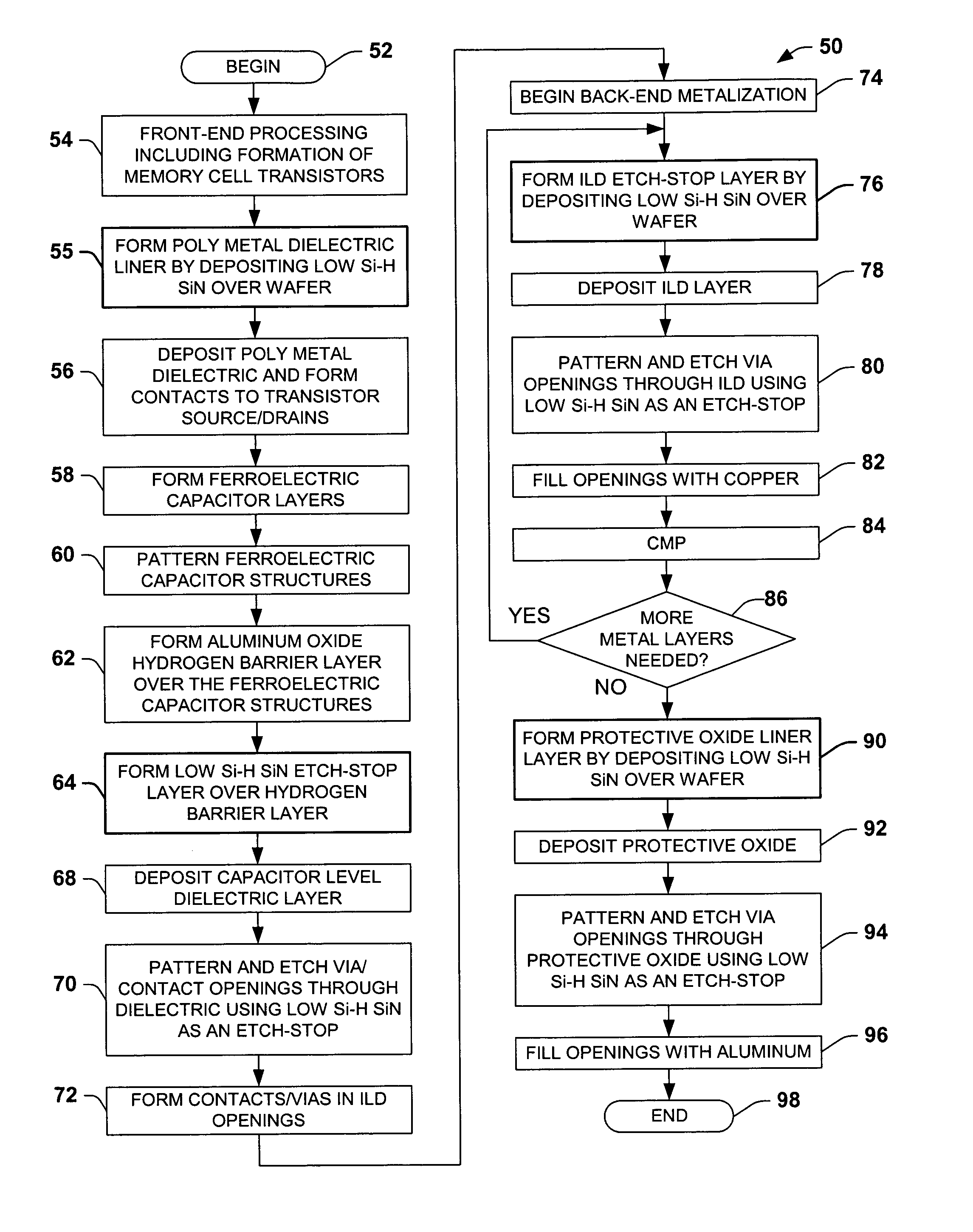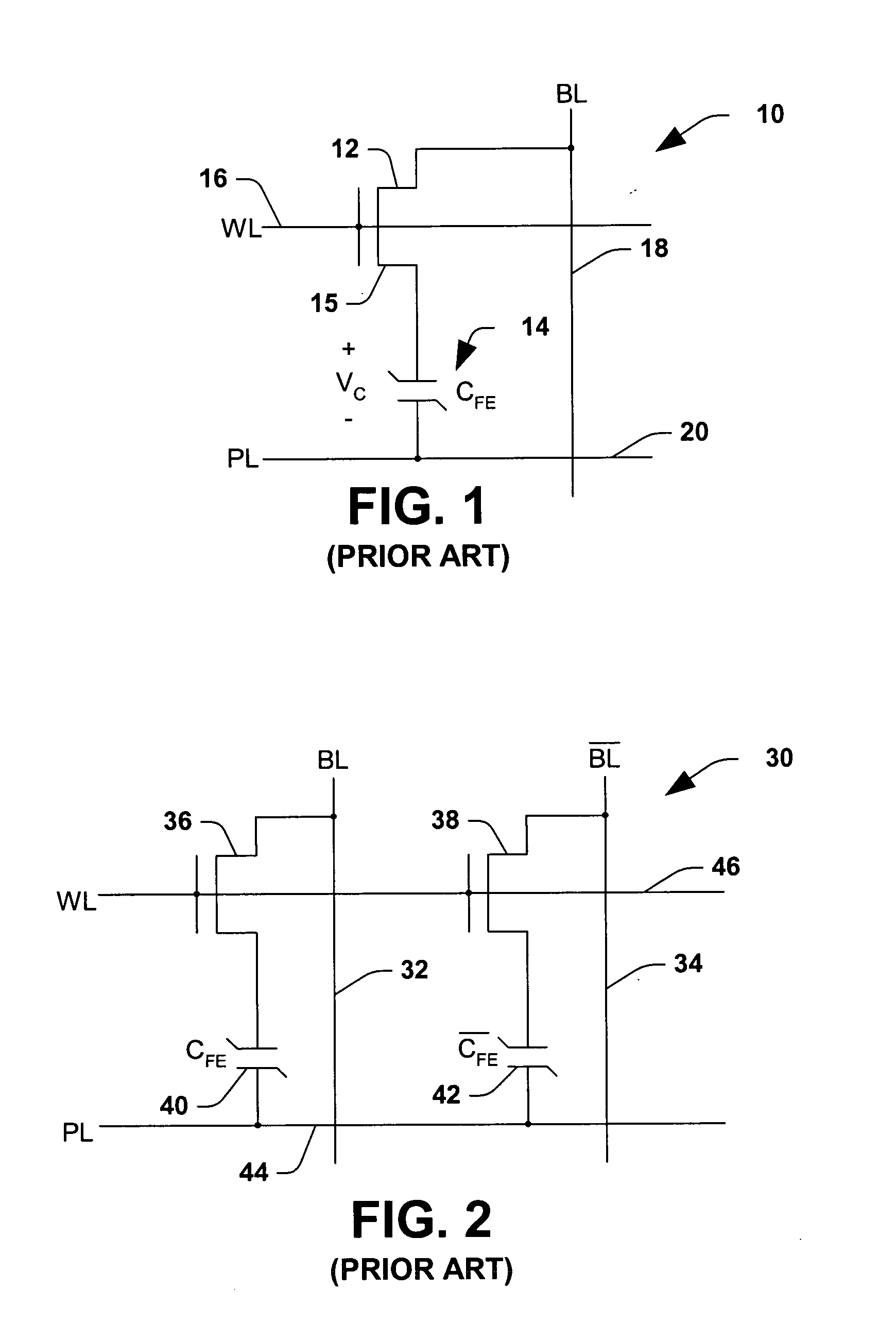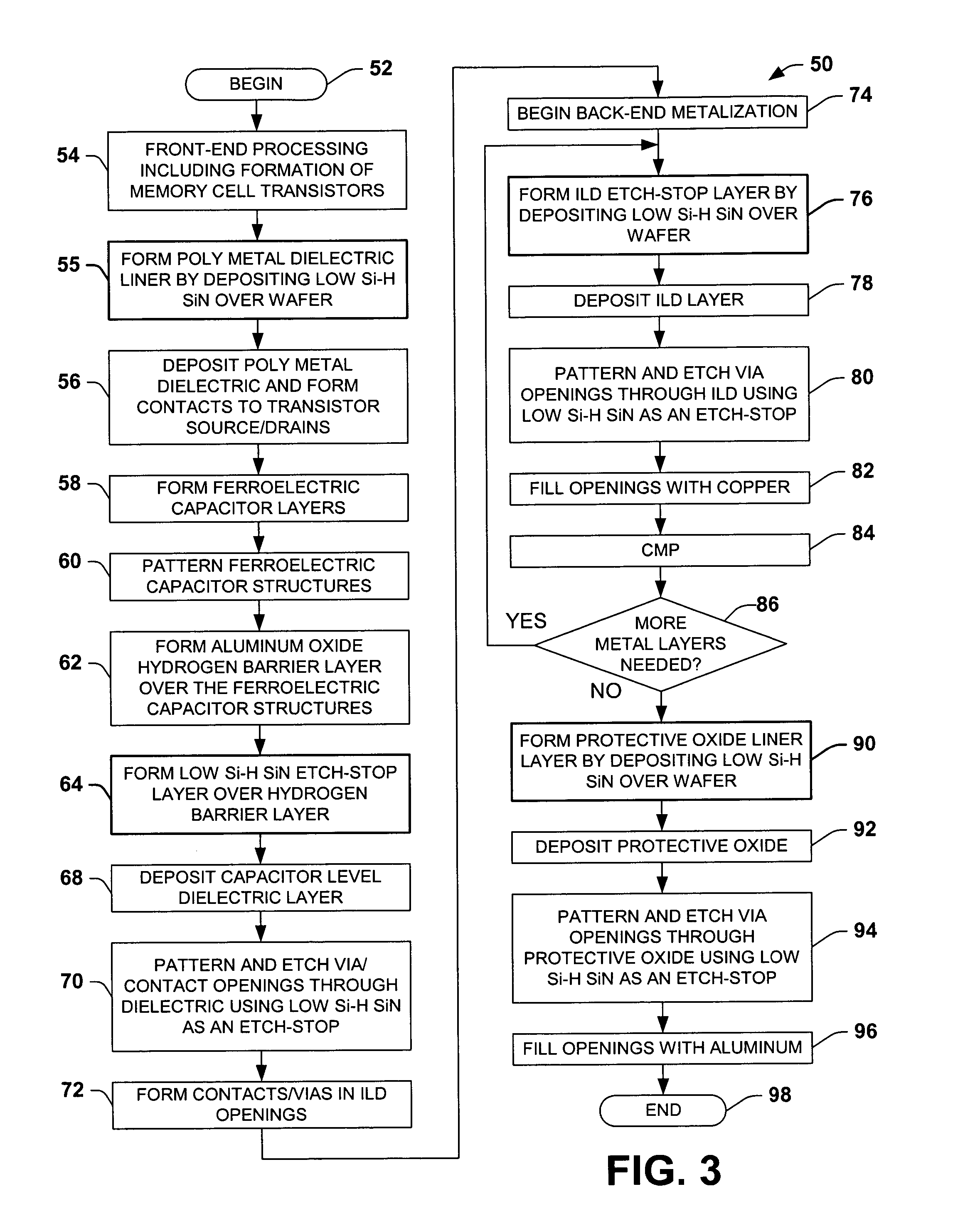Low silicon-hydrogen sin layer to inhibit hydrogen related degradation in semiconductor devices having ferroelectric components
a technology of ferroelectric components and hydrogen barrier layers, which is applied in the direction of semiconductor devices, capacitors, electrical devices, etc., can solve the problems of negative bias temperature instability (nbti), adversely degrade the performance of memory cell transistors and logic transistors in the wafer, and degraded switched polarization, so as to reduce or prevent the diffusion of hydrogen, reduce the hydrogen related degradation of switched polarization properties, and reduce negative bias temperature instability
- Summary
- Abstract
- Description
- Claims
- Application Information
AI Technical Summary
Benefits of technology
Problems solved by technology
Method used
Image
Examples
Embodiment Construction
[0022] The present invention will now be described with reference to the attached drawing figures, wherein like reference numerals are used to refer to like elements throughout.
[0023] The invention relates to semiconductor devices and fabrication methods in which a hydrogen barrier is formed using low silicon-hydrogen silicon nitride (low Si—H SiN) to prevent or inhibit hydrogen related degradation of ferroelectric capacitors (e.g., degraded switched polarization properties) and / or degradation of transistors in a semiconductor device (e.g., NBTI). The inventors have appreciated that operational properties of ferroelectric materials may be severely degraded by exposure to hydrogen during processing of semiconductor devices, including back-end processing found in many CMOS integration schemes. In addition, hydrogen has been found to adversely degrade the performance of transistors, for example, by creating fixed oxide charge and interface traps at the transistor gate dielectric / silic...
PUM
 Login to View More
Login to View More Abstract
Description
Claims
Application Information
 Login to View More
Login to View More - R&D
- Intellectual Property
- Life Sciences
- Materials
- Tech Scout
- Unparalleled Data Quality
- Higher Quality Content
- 60% Fewer Hallucinations
Browse by: Latest US Patents, China's latest patents, Technical Efficacy Thesaurus, Application Domain, Technology Topic, Popular Technical Reports.
© 2025 PatSnap. All rights reserved.Legal|Privacy policy|Modern Slavery Act Transparency Statement|Sitemap|About US| Contact US: help@patsnap.com



